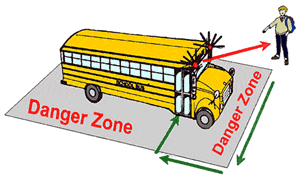Lesson Plans by Grade level
School Bus Safety Facts


Resources
- School Bus Facts. School Bus Ontario
- School bus safety. Student Transportation of Peel Region
- School bus safety. Elmer the Safety Elephant
- School bus safety. Ontario Ministry of Transportation
- Safety First! Windsor Essex Student Transportation Services
- CAA School Safety Patrol. CAA South Central Ontario
- School Zone Safety. CAA South Central Ontario





